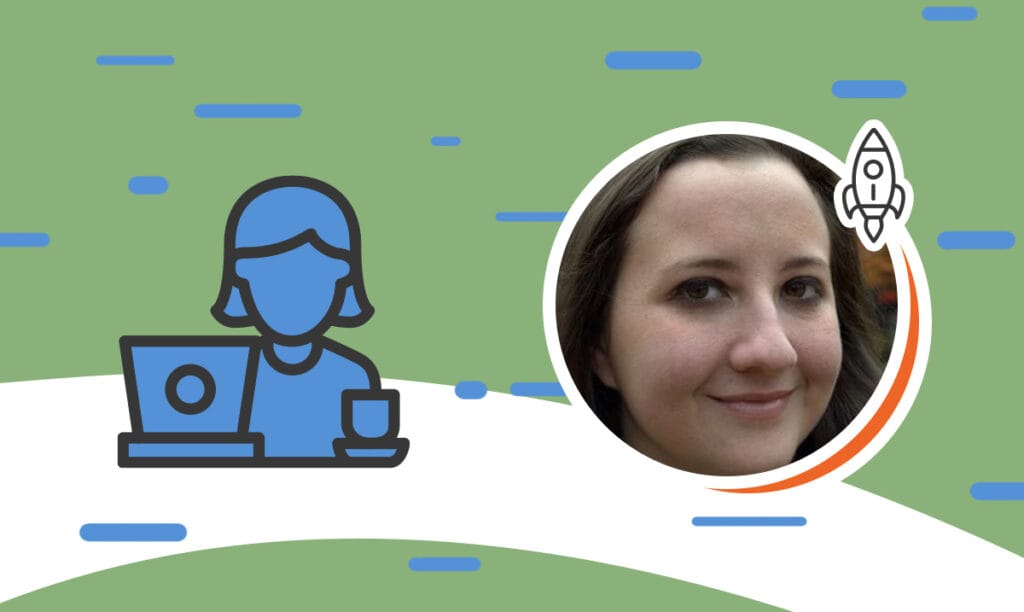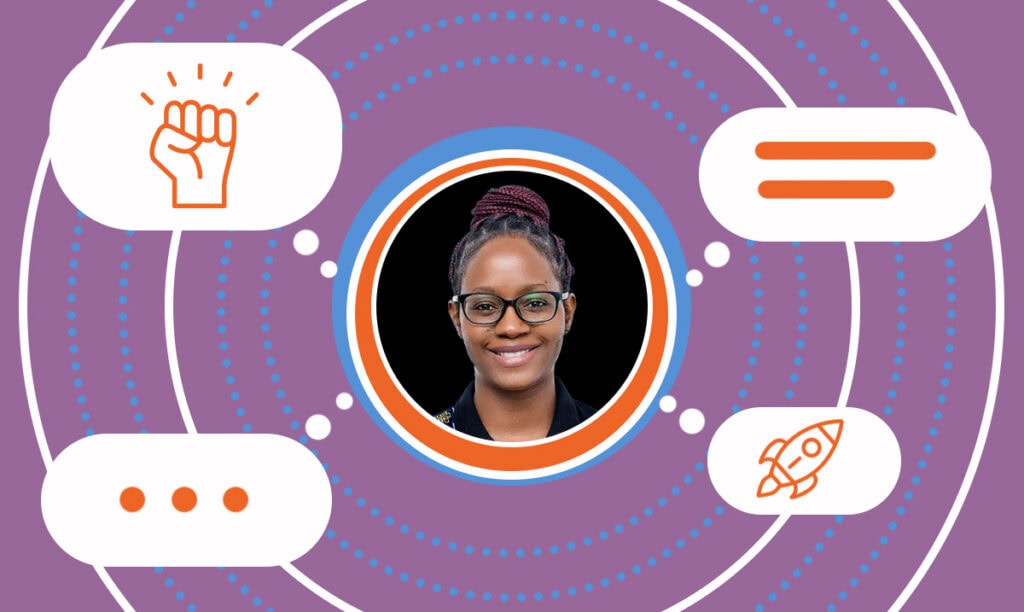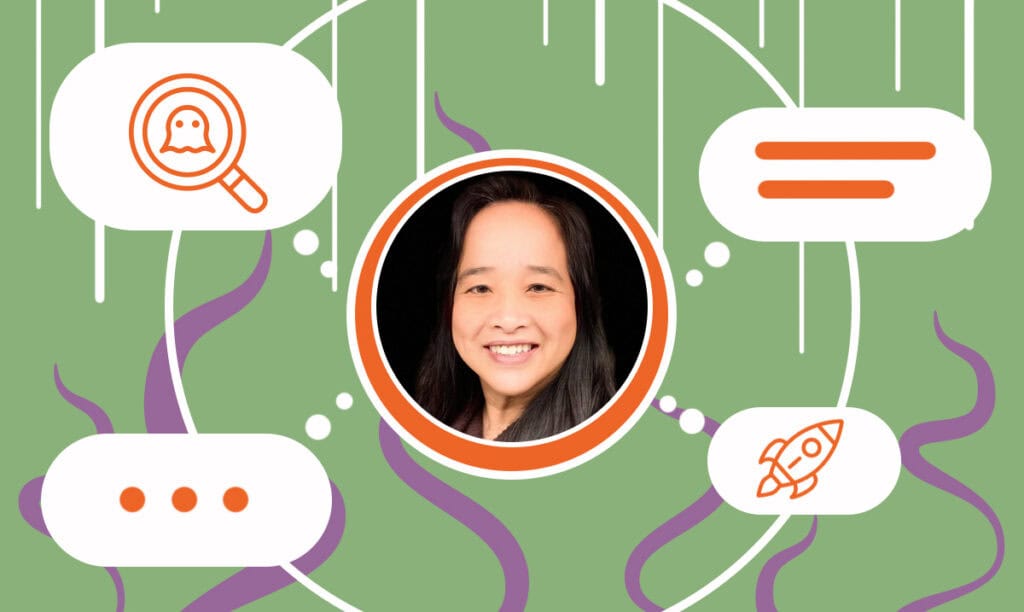In this interview, we sit down with Amy Pishner, the Owner and Head Trainer of Valor K9 Academy. Amy shares her journey from a military backgroundto ...
The Freelancer’s Path: Lessons from Alli Hill’s Experience
Written by: Carolyn Young
Carolyn Young is a business writer who focuses on entrepreneurial concepts and the business formation. She has over 25 years of experience in business roles, and has authored several entrepreneurship textbooks.
Published on December 21, 2023
Updated on March 15, 2024

In an enlightening conversation with Alli Hill, the founder and director of Fleurish Freelance, we delve into the intricate journey of freelancing. Alli, a seasoned freelance writer, speaker, and coach, shares her vast experience in transitioning from traditional employment to the dynamic world of freelancing. From overcoming initial doubts to building a personal brand and effectively managing client relationships, Alli’s insights offer a comprehensive guide for aspiring freelancers. This interview uncovers the strategies, challenges, and triumphs of a successful freelance career, providing invaluable advice for anyone considering this path.
Overcoming Limiting Beliefs in Freelance Beginnings
SBS – How did you overcome the initial limiting beliefs that held you back when starting your freelance career?
Alli – That is a good question. At that time, some of my limiting beliefs were that I needed to have a physical business, storefront, office space, or something like that. To be able to do that, you needed several months’ worth of savings to help cover the costs of opening such a place, renovating, and buying equipment and office furniture. That’s something a lot of traditional businesses face, but when you’re doing an online, digital freelance business, you don’t have a lot of the same overhead costs that a traditional business has.
Navigating the Transition: Traditional Employment to Freelance
SBS – What key steps did you take to transition from traditional employment to freelancing?
Alli – Everything’s just interwoven there. I believed I needed experience working for somebody else first so that I could learn in a low-risk environment, get my feet wet, and make industry connections. Those are very helpful things. I’m not trying to downgrade them— but they’re not necessarily essential. If you don’t have those things, you can still build a strong foundation for your business. That’s what I ended up doing.
I think the key thing is to find what your true motivations are and know how badly you want to do something different than what you’ve been doing. For me, it was my children. Being a working mom of two kids under two years old, I didn’t have the time freedom I wanted. I knew I wanted to be more available to them than what a typical eight-to-five job would allow me to do. I had decided that I’ve got to plant these seeds now so that when they get older, in school and doing activities, I can experience that.
Tackling Challenges in Full-time Freelancing
SBS – What was the most challenging thing you experienced when starting to work freelance full-time?
Alli – I think the biggest challenge when starting any type of freelance business or entrepreneurship is to build it from the ground up, but when you work for somebody else, you’re going to fit into a box someone else has created for you. You’re working along their schedule. You’re checking off their list of duties and job requirements that they need you to do. It’s all very predictable. It’s all very systematized. You’re going into a turnkey job.
But when you’re freelancing or working in any capacity for yourself, you don’t have that. You have nothing, and you have to figure out what you’re going to do with your time today that is going to make the biggest impact on your business. Those answers are not always easy. They’re not always clear. There’s a lot of trial and error.
Your day may not always look the same from day to day when you’re working for yourself compared to when you’re working for somebody else. There’s a lot more that you have to figure out what works for you. That’s also one of the best things about working for yourself — because this is strictly for you. You have created something specifically for yourself to utilize as your best strength and assets.
Balancing Act: Work Ethic in Freelance Business
SBS – How do you balance freelance business with work ethic?
Alli – If you don’t have a good work ethic when working for yourself, you don’t have a business. You don’t have clients, you don’t have customers. Nobody will stand over your shoulder and follow up with you with “Have you done this?” “Have you answered this person’s question?” “Have you gotten back in touch with this person?” It’s all on you to do, and it takes a highly motivated, driven individual to do the type of work that I do.
If a company screws it, it’s a reflection on the company, but if you mess up in your business, that’s a reflection on you. I take that very seriously. I take it personally because there’s no one for me to shift the blame to (not saying that I would do that). You know, it falls directly on you. You are the face of your business.
Crafting a Personal and Business Brand in Freelancing
SBS – What do you think is important to build a brand for yourself and your business as a freelancer?
Alli – You have to think about your personal brand as your reputation. It can be your most powerful marketing tool аnd the one thing that helps you to get continuous business without making the effort of constantly advertising or marketing. Your brand needs to be able to speak for itself.
People need to get to know the person behind the keyboard, the person behind the screen. In my case, I have a global client base. I have worked with customers from all over the world — Europe, Asia, and even South Africa — and these are people that I’ll never meet in person. I don’t have the benefit of meeting up with them for a networking dinner or something like that.
To help people get to know the person who is handling all of their work, publishing original content, and doing it consistently — whether it’s posting your thoughts on LinkedIn, having a blog, or creating a video blog — is going to help people associate my skills and my expertise with what I can do for them. It builds trust. When they can see not only what you can do for them but just what you’re capable of in general, I think it helps to build trust and make them confident in your skills when they hire you.
Mastering Payment Negotiations with Clients
SBS – How do you negotiate payment with new and existing clients?
Alli – I used to struggle with this a lot. When you’re first starting, you don’t always know how much time will go into something because it’s still very new to you. So, there is a bit of a learning curve. I would encourage freelancers to approach the pricing strategy with a very open mind in the beginning. However, as you grow and mature in your business, collect more experience, and have a better idea of how much time, energy, and expertise something will take you, I would recommend approaching pricing from a place of value to the client.
As a freelance writer, I write a lot of marketing and advertising materials to clients, which will help them build their brands and reputations and drive actual sales. If they stand to gain several new clients for thousands and thousands of dollars per year for themselves, then I will look at what my contributions are and how valuable that will be to the client. If they need something to help them build and grow their business, that will be seen as more valuable than a one-time flyer or announcement about a company.
So, think about it from the place of value and then what that’s going to mean to the client. How much time am I saving them by offloading this task? How am I helping them to position their business better? How am I saving them from hiring an internal employee who will cost them several times more than outsourcing to me on a fractional basis?
Strategic Marketing in the Freelance Landscape
SBS – How do you market your services on the freelance market?
Alli – One of the first avenues where I started receiving clients was by partnering with agencies who are much larger than me but also dabble in the same line of work. When you partner with agencies, they’re the ones who invest in technology and advertising to get the clients there. They’re the ones spending the time interfacing with the clients, and then they are offloading their work to the freelancer.
Agency prices paid to freelancers are all over the place. They can be on the very, very high luxury end. They can also be on the very, very low bargain end. You just need to figure out where your sweet spot is.
Partnering with an agency also allows you to focus on what you do best. You don’t have to have the client meetings and the invoicing headaches. You can focus on your craft, which saves a lot of time and may allow you to take a lower rate for peace. Plus, it ensures a steady flow of clients because you do not always have to chase new business. You partner with some really good agencies in the beginning, and you’ll probably be set for a while.
The other option that I really like is using Fiverr, which is a large freelance marketplace to find clients. What I like about Fiverr compared to other freelance platforms is that it’s all inbound. The clients come to me rather than me having to send pitches and get into price bidding wars. If you’re brand new to freelancing, pitching is probably not going to be your strong suit. In order to win pitches for some of these freelance websites, you’re going to have to cut your prices low, and I don’t think that talented freelancers should have to do that just to get clients.
So, I love the Fiverr platform because the clients come to you, and you have a lot of opportunities to make a good impression. You send them offers, and payments are handled through the platform, so you don’t have any invoicing headaches. It’s a really good platform, and I’ve got several resources on how to use Fiverr for freelancing on my blog.
Client Relationships: Management and Expectations
SBS – How do you manage relationships with clients and their expectations?
Alli – It is a little tricky. I would say invest in a CRM, where you have all your clients and a place where you can store all your interactions. I treat my CRM as a place where I can add diary entries, so every time I have an interaction, I can take notes about what we discussed. I don’t have to have a transcript of every call or anything, but I just want a few key details to refresh my memory.
Also, as a professional, you need to be proactive one. If a client is emailing me, asking me where something is or when they can expect me to finish the project, that means that I’ve taken too long to get back to them. Even if I don’t think it’s taken too long, I need to rise above and meet the client’s expectations. So, being super proactive, very clear, and giving a recap of the conversation or what you think they are asking for adds a lot of opportunity for them to clarify anything that you’ve misunderstood. It just leads to a more productive relationship going forward.
Navigating Freelancing Pitfalls
SBS – What are some pitfalls that freelancers face?
Alli – Well, in the freelance lifestyle, there are never any guarantees, right? There’s a natural flow to any type of freelance work. Sometimes, every client you’ve ever had is going to want something all at once. Then, the next month, you might have crickets and be begging for something to come into your email inbox. It can be very, very hit or miss.
You need to be able to manage your time. During those peak high periods, when you’re getting a lot of work, you need to be able not to sacrifice quality because you’re trying to do more in less time than what you normally would. You’ve got to learn how to pick and choose your projects carefully. You don’t want to accept every single project that comes your way because if it’s just not a good fit for you, you’ll end up spending a lot more time and energy on it than it’s worth. But at the same time, for any projects that come your way that are a good fit for you, you also want to find a way to say “yes” because you are going to have those slow periods where you have little work. It’s going to balance out. Plus, if you have to tell a client “no,” there’s a chance that they’ll have to go somewhere else to fill their needs and that person might be able to fill their future needs as well.
Staying Competitive: Adapting to New Trends
SBS – What is important to stay updated with the new stuff and be competitive?
Alli – AI has definitely changed freelance writing. I can tell you that many clients have shifted to doing it themselves because the AI tools just keep evolving. Freelancers need to lean into that. With any kind of disruptive technology, they need to take a me-first approach to start learning those tools and know how to use them to support their work and add value to their clients.
Clients may be curious and use these tools. That doesn’t necessarily mean that there’s no longer a place for the freelancer. But if a freelancer can help them to use those tools better than what they can do themselves, yes, they’re going to continue having not only a good relationship but also a good income.
AI aside, there are always going to be new tools and technologies that can impact the work of a freelancer. It might improve it in some ways, and it might create complications in other ways, but I think that having an open mind, trying these things for yourselves, and just being committed to always having a student mentality is going to help you get ahead of other freelancers who are staying in the same place.
Advice for Transitioning to Freelancing
SBS – What advice would you give to someone who wants to quit a traditional job to become a freelancer?
Alli – It’s funny because I got my first freelance client while working full-time. By the end of that month, I had four clients, and I was working my full-time job. I was coming home to my family in the evenings and working another three or four hours. Once I put the kids to bed, I worked until midnight. I did that for a few months.
I did that for a couple of reasons. Yes, I was tired, but I’m all caught up now. I did that not because I was afraid of losing my income or my safety net but because I wanted to make sure that I could make freelancing a sustainable career option. Just because I got a couple of clients one month and then a couple of clients the next month, that doesn’t mean that I was positioned for long-term success.
I feel like anybody who wants to test out the freelance waters should do so without leaving the comfort of their safety net or their full-time job and make sure that they can create a repeatable, predictable system for getting clients and being successful in freelancing. Eventually, you grow your client list so much that you have to make a choice to keep your day job or go freelance full-time.
Just take a couple of hours in the evening to test your business idea, whatever that may be, turn it into a little part-time job, and then let it grow from there because there’s a potential that you may not even like it. But then, if you leave your full-time job, you’re basically stuck without an income and don’t know what that next step is. So, definitely test, test, and iterate.
Factors for a Profitable Freelance Business
SBS – What are some key factors for a strong and profitable freelance business now?
Alli – Something that I did learn at my old job was to have rigid flexibility. That means being rigid about your goals and what you want to achieve but being flexible about how you go about achieving them. Again, it goes back to having that student mentality.
You may have an idea of what you want your freelance business to look like, but other factors that you didn’t plan on — location, time, or client-related — may not let you have the business you originally envisioned. So, you need to be flexible in how you go about reaching your goals. If something doesn’t work, you need to try something else. If you have that student mentality of always learning and testing new things, then this this part of freelancing comes a lot easier.
The Freelancer’s Path: Lessons from Alli Hill’s Experience
- Overcoming Limiting Beliefs in Freelance Beginnings
- Navigating the Transition: Traditional Employment to Freelance
- Tackling Challenges in Full-time Freelancing
- Balancing Act: Work Ethic in Freelance Business
- Crafting a Personal and Business Brand in Freelancing
- Mastering Payment Negotiations with Clients
- Strategic Marketing in the Freelance Landscape
- Client Relationships: Management and Expectations
- Navigating Freelancing Pitfalls
- Staying Competitive: Adapting to New Trends
- Advice for Transitioning to Freelancing
- Factors for a Profitable Freelance Business
Subscribe to Our Newsletter
and gain insider access to cutting-edge business insights and trends.
Featured Resources

Amy Pishner’s Lessons for Success in Dog Training Business
Published on July 23, 2024
Read Now

Sarah Dusek on Empowering Women Entrepreneurs in Africa
Published on July 23, 2024
Welcome to our interview with Sarah Dusek, co-founder and managing partner of Enygma Ventures. Sarah is a seasoned entrepreneur and investor,dedicat ...
Read Now

How to Create a Top Ghost Tour Experience
Published on July 22, 2024
For today’s dose of real (business) experiences, we bring you the interview with Ting Rappa. She founded American Ghost Adventures, aFlorida-based ...
Read Now
Comments